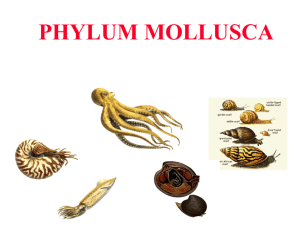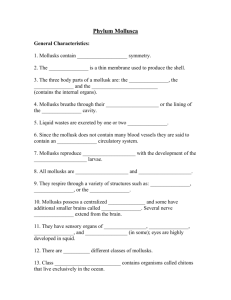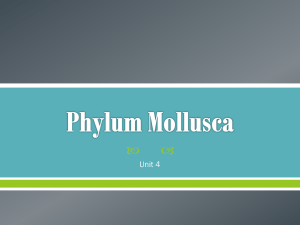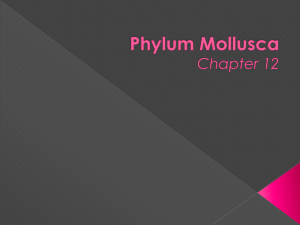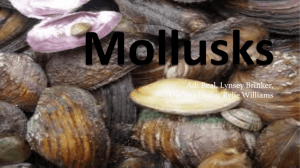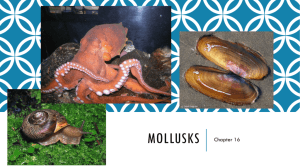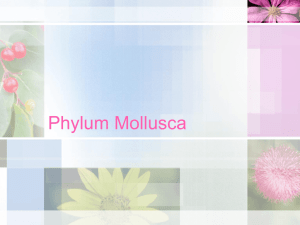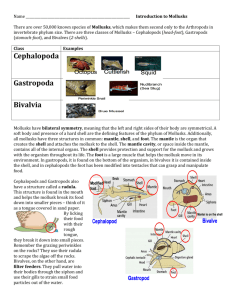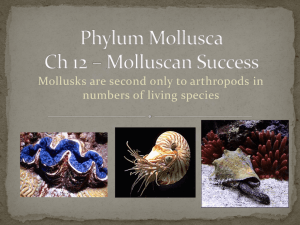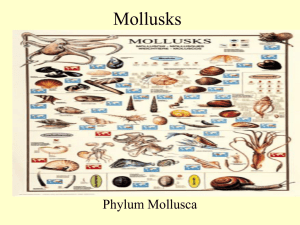Review Information for Mollusks
advertisement
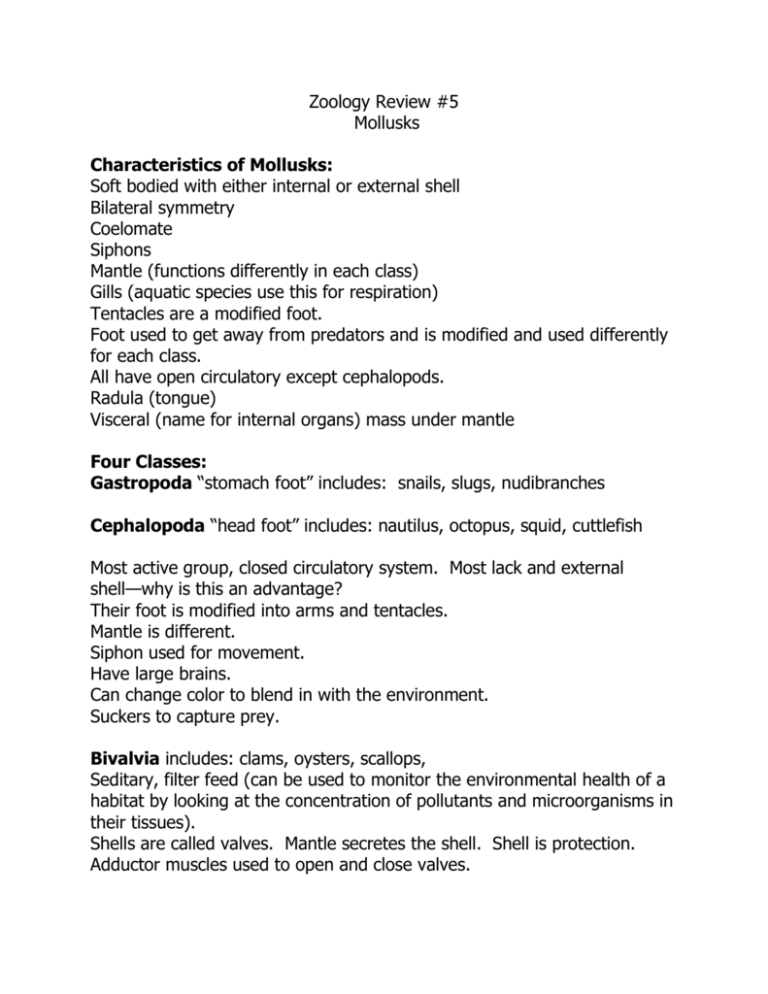
Zoology Review #5 Mollusks Characteristics of Mollusks: Soft bodied with either internal or external shell Bilateral symmetry Coelomate Siphons Mantle (functions differently in each class) Gills (aquatic species use this for respiration) Tentacles are a modified foot. Foot used to get away from predators and is modified and used differently for each class. All have open circulatory except cephalopods. Radula (tongue) Visceral (name for internal organs) mass under mantle Four Classes: Gastropoda “stomach foot” includes: snails, slugs, nudibranches Cephalopoda “head foot” includes: nautilus, octopus, squid, cuttlefish Most active group, closed circulatory system. Most lack and external shell—why is this an advantage? Their foot is modified into arms and tentacles. Mantle is different. Siphon used for movement. Have large brains. Can change color to blend in with the environment. Suckers to capture prey. Bivalvia includes: clams, oysters, scallops, Seditary, filter feed (can be used to monitor the environmental health of a habitat by looking at the concentration of pollutants and microorganisms in their tissues). Shells are called valves. Mantle secretes the shell. Shell is protection. Adductor muscles used to open and close valves. Incurrent siphon brings in water with food and oxygen, excurrent takes away wastes with water. (Open circulatory). Oldest part of the shell is the umbo. Economically important – jewelry, food. Polyplacophora includes: chitins (8 valves on dorsal side, flattened foot, reduced head) ****Study the diagram of the squid on your coloring sheet.********** You need to be able to label it without a word bank.
